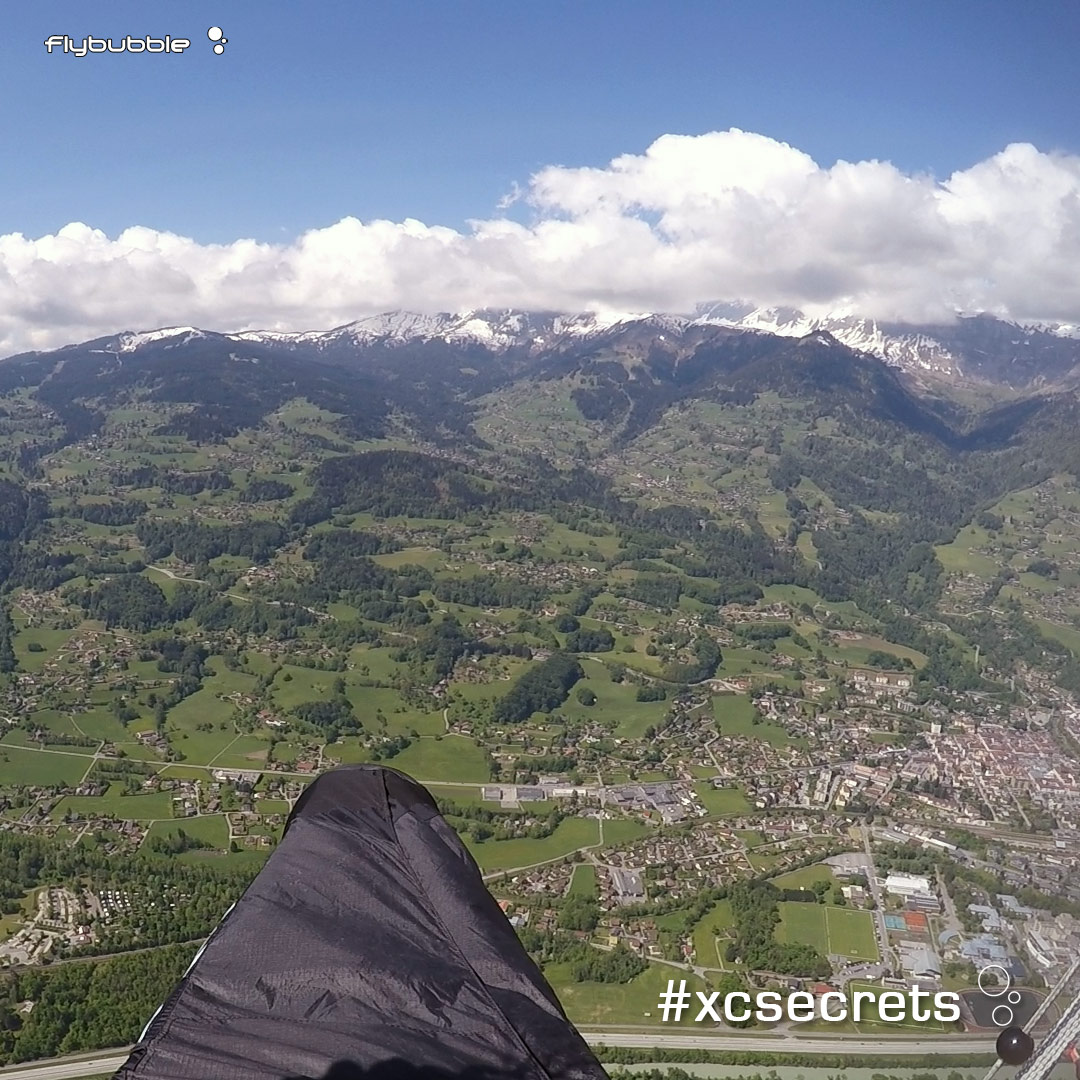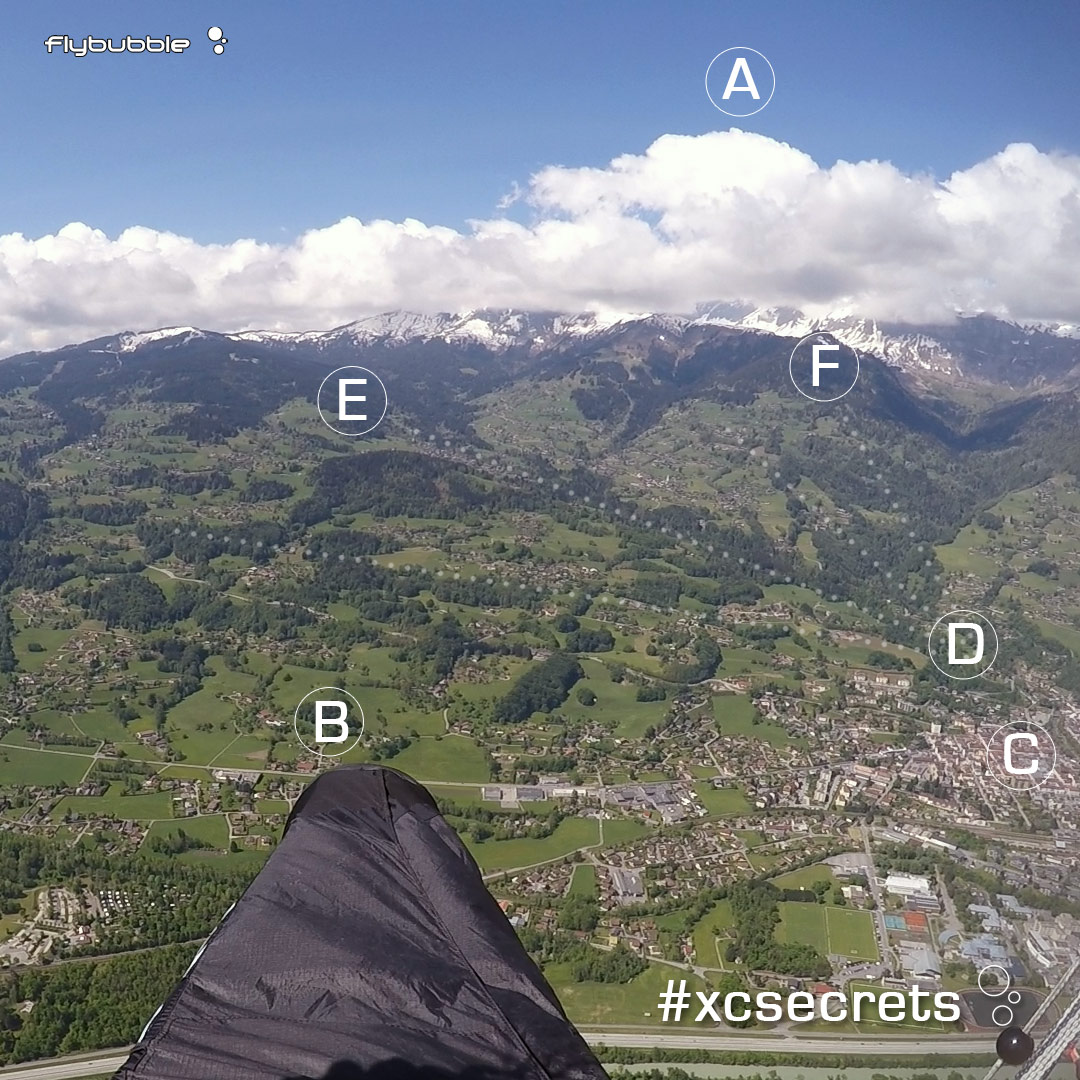
What do you see? Analyze the snapshot above yourself, before scrolling down for the answers.


3. Valley crossing in the Alps near Sallanches during the Bornes to Fly 2016 race. Small shadows indicate that it's close to midday. The pilot is low and will likely sink into the strengthening valley wind.
A. The top of the cumulus is being pushed over to the left, the left edge is decaying / frayed, indicating the wind is from the right (north) on the large cumulus in the distance and the lower clouds in front. This indicates there is lift over the mountains, and sink (no clouds) in the valley, so we can't expect a good thermal until the higher slopes.
B. Nice landing options around here, clear of the town turbulence, with good alternatives in case of being pushed downwind. But there will be far less wind landing higher, around E
C. Thermal source. Lots of buildings, in a grid shape, with good air traps and heating. The pilot is gliding on the wrong line, into the sinking air downwind of the thermals which will release off the town. 45 degrees to the right would be better, or starting the glide from further north.
D. The valley wind (coming from the right) will split here, pushed against a rising fin of ground and drawn into a sheltered gully.
E. This is where the pilot landed, after working a small scrap of lift over the forest
F. The right line up to here saw pilots climb on this steeper, sheltered slope
